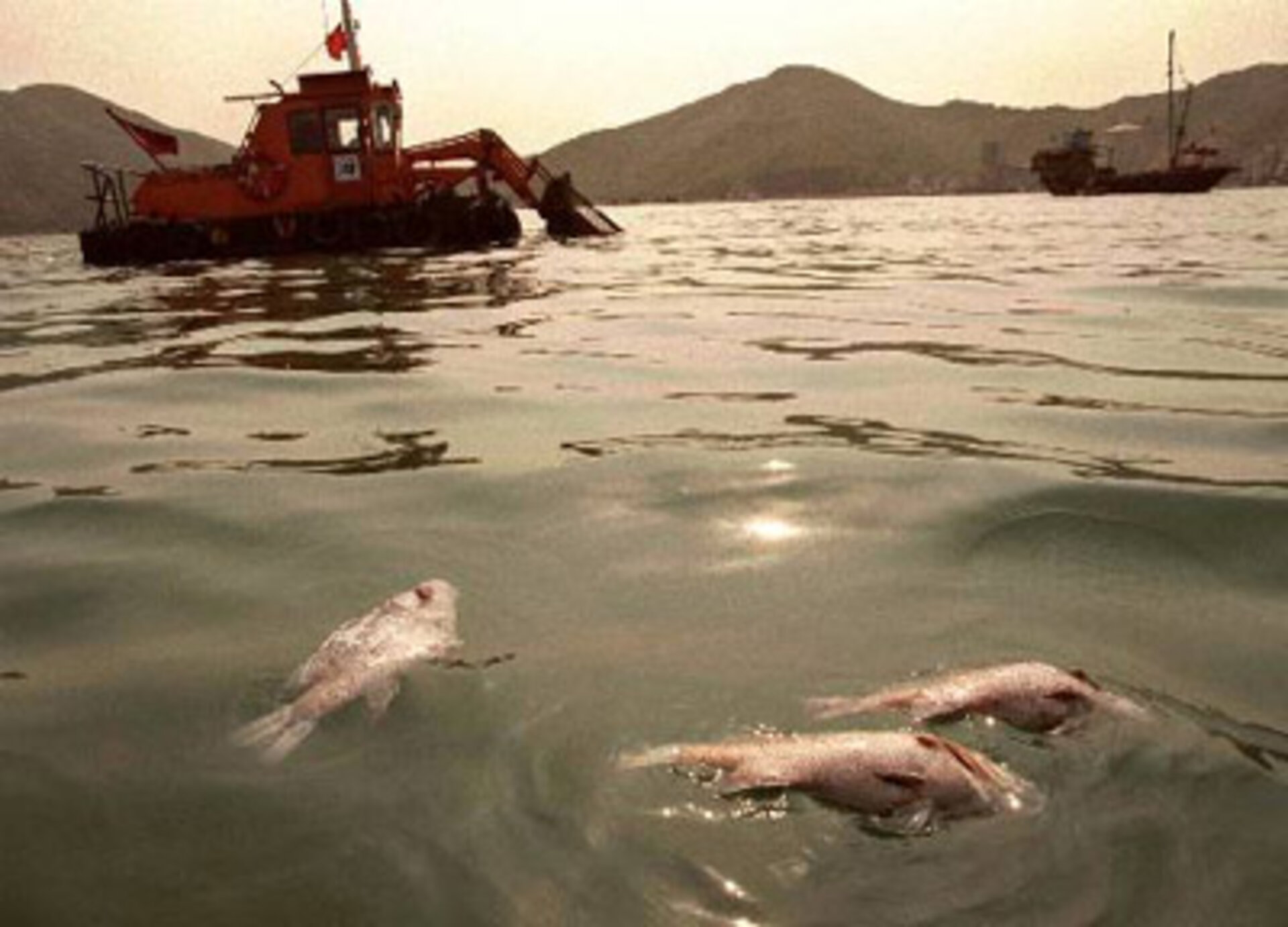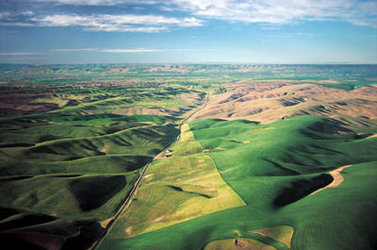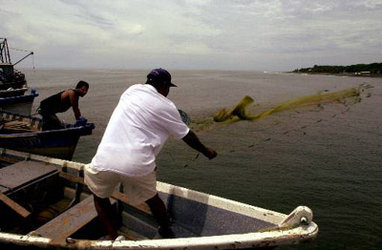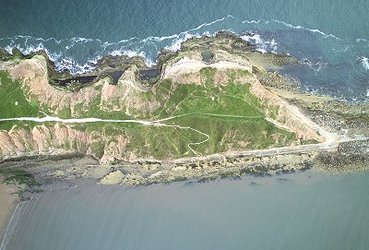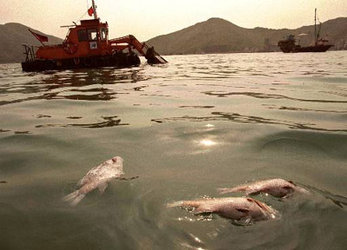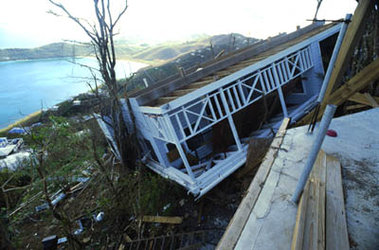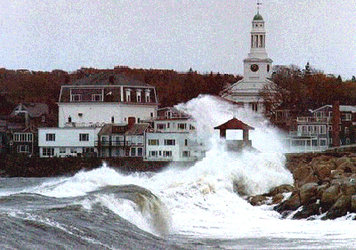Algae blooms
Thousands of dead fish - from tuna to mantas to sharks - washed up on the Kenya and Somali coasts in February 2002. Cause of death: variously poisoning or suffocation.
Local oceanographers confirmed they had been killed by a bloom of toxic algae. A sudden upsurge of nutrient-rich water and high temperatures had provoked microscopic blue-green algae to surge out of control, reproducing into a dense mass whose presence poisons smaller fish and - as dead algae decay and exhaust available oxygen - suffocates larger ones.
The surf was darker than usual, due to chlorophyll pigments produced by the algae, which are classed both as phytoplankton and bacteria. The blooms are sometimes called ‘red tides’ because they turn water a red-brown. Fishermen were banned from selling their catches until the bloom cleared away, because the toxins infecting the fish can also harm - even kill - humans.
Algae blooms are nothing new, although there is some evidence their global incidence is increasing. Some scientists believe toxic algae are being transported around the world in freighter ballast. Certainly human activity can incite bloom formation. Moreton Bay in Queensland, Australia, was paralysed in 2000 by hundreds of tonnes of toxic algae, growing at a rate of 100 km2 a minute. It was caused by iron-rich sediment in the waters, released by local land development.
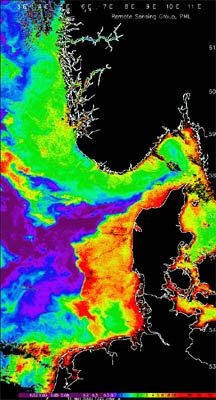
Envisat can provide early warning of potential bloom development, identifying water conditions, sediment flows or pollution run-off that might promote their growth. Once a bloom begins, MERIS data, together with the results of laboratory tests on water samples, can identify its chlorophyll pigment and, therefore, its species and toxicity.
An early alert would be useful to aquaculture industries as well as environment agencies. Shellfish and coastal life are poisoned by toxic algae while fish in farms are unable to escape from choking blooms into better-oxygenated stretches of water. Environment agencies need to close down exposed beaches – some algae fumes can cause blisters, eye irritation or breathing difficulties.
Besides providing early bloom detection, Envisat promises to provide oceanographers with a synoptic view of the dynamics of algae populations and their geographical distribution.


